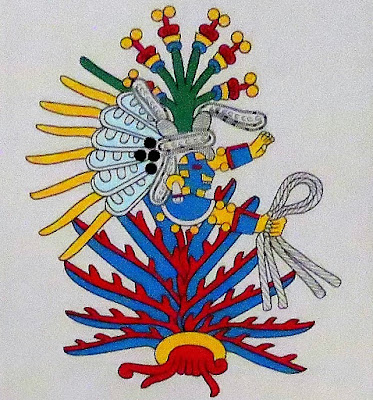On pulque, you regret the 400-rabbit nights
'Pulque is the product of a sexually frustrated agave'. That's what I said a few years ago, in a post praising the latest book by Amy Stewart called The Drunken Botanist.
It's more or less true. Pulque is a drink having a bit of revival in Mexico according to my friend Manual Bonilla Rodríguez. He likes it, although his father is more inclined to Tequila. The Spanish reported in the 1780s that about 16.5 million gallons of pulque were produced each year in Mexico. I get the sense that dropped in the early 20th century but may now be on the way up.
Both drinks are produced from the agave plant, that large blue-grey succulent you see straying occasionally into roadside verges and most noticeable when, after some 25 years, it sends up a towering flowering stalk to produce bright yellow flowers. The parent plant then dies, to be replaced by pups at its base. (And yes, that's a humming bird I captured in this close-up of agave flowers.)
To create pulque, the flower stalk is cut off before it has a chance to bloom. The base of the plant is lanced and begins to rot. Bacteria and other microorganisms move in, fermenting the sap which continues to flow as the squishy insides are scraped away.
This farming of pulque continues for many months and a single plant can produce 1000 litres or more. I said last time that that 'pulque is apparently not very nice to drink' (and has a rather stringent odour) but Manual assures me that's not the case. However he wondered if it might contain a few too many unfamiliar bugs* to make it comfortable drinking for visitors such as myself (as it happens there was no opportunity to try it).
In my recent visit I didn't advance my understanding of pulque much further but it was pointed out that Agave salmiana, a local species to Mexico City, was one that is commonly milked to produce the moderately (4-6%) alcoholic beverage. This is a specimen growing wild near the National Autonomous University of Mexico, and the specimen towards the top of this post is from the nearby botanic garden.
Pulque has a long history in the region and one of the permanent displays at the Museo Nacional de Anthropologia concerns Pulque Culture, featuring of all things, rabbits! In Aztec and other central Mexican cultures, the goddess (or female divinity) Mayahuel was strongly associated with the agave. You can see this from the symbolic image of Mayahuel at the top of my post (taken from the exhibition display), with the upper torso emerging from spiny leaves.
The agave gave the people plenty of products, such as roofing materials, fibre for ropes and weaving, tasty worms and of course pulque. It seem that the patron of pulque was the god Ome Tochtli, the 'Two Rabbit'. Drinking more than a single serve was prohibited due the fear that anyone drunk on pulque would 'fall under the influence of the Cenzon Totochtin, the 'Four Hundred Rabbits'. This would lead to loss of control, and aggressive and violent behaviour. So two rabbits good, 400 rabbits not so good.
On the way to the airport to fly out of Mexico City we passed a brightly coloured Pulqueria, a place were you might go to try the product. Unfortunately we were unable to stop for a photograph, let alone a tasting, so I give you this photograph taken on Plaza Garibaldi, Mexico City, in October 2007 (from Wikipedia Commons).
*Postscript: Paul Ward, on Facebook (5 June 2018) notes that Pulque is 'an interesting mixed culture ferment' with 'one of the main microbes ... a bacterium rather than a yeast, Zymomonas mobilis'. Paul adds that this bacterium can tolerate high alcohol concentrations, up to 15-16%, and that Pulque producers are very protective of their starter cultures.






Comments